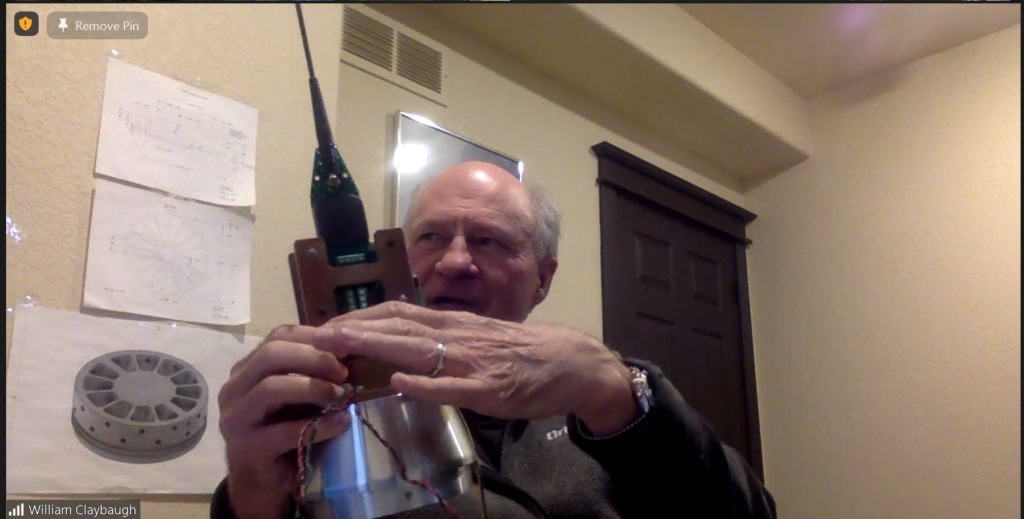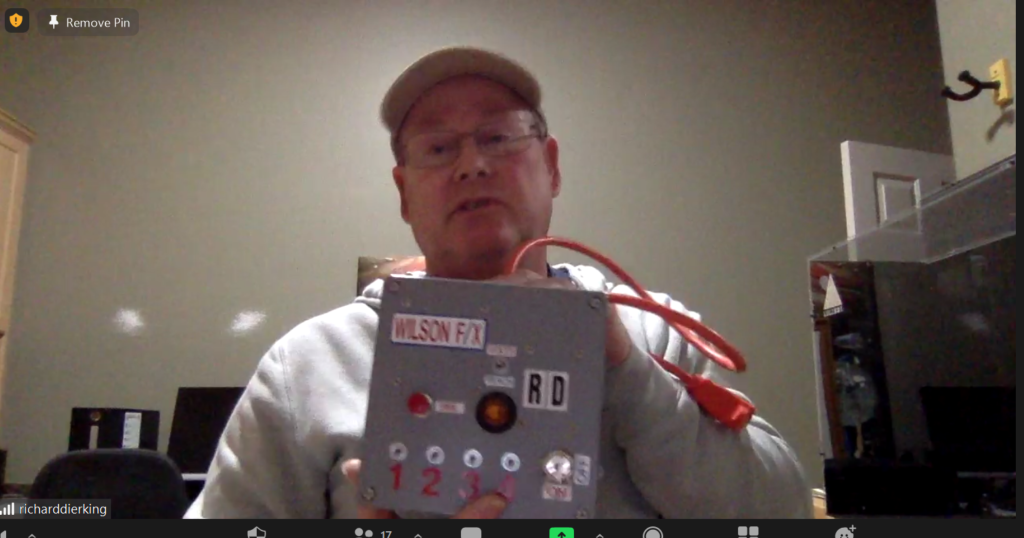by Keith Yoerg (RRS Secretary)
The latest meeting of the Reaction Research Society took place this past Friday, April 9th and had 15 attendees – including another guest presenter. We kicked off the meeting by watching footage of Bill Inman’s Solar Cat launch from March, and a video of a liquid engine static fire from the Georgia Tech Yellow Jacket Space Program, who presented to the RRS about their project last month.
GUEST PRESENTATION – WILSON F/X LAUNCH CONTROLLERS
Brad Wilson from Wilson F/X launch controllers was our guest presenter for this month, continuing our recent discussions on wireless launch controllers. Brad started the company roughly 20 years ago with Dan Fox, after building launch controllers for their local high power rocketry club in the midwest. They began with a wired single pad controller, and have since expanded to build 64-pad systems as well as adding wireless firing capabilities. Their wired and wireless modules are in use by many local rocketry clubs including ROC and FAR, as well as others around the country. The largest motor known to have been flown on a Wilson F/X system was a size Q at a rocket launch in Black Rock.

RRS members had a lot of good questions for Brad, who was gracious enough to explain several different features and specifications of his system. Both the wired and wireless Wilson F/X systems use 32-bit encryption to send the firing signal from the control box (where the operator flips the switch) to the pad box (which supplies the current to light the ignition charge). This means the control box is required and the pad box cannot be used by itself to fire the motor. Brad sent along some product specification sheets for RRS members to review. Any member that would like a copy can request one by emailing the RRS secretary at: secretary@rrs.org
EVENTS AT THE MTA
After a brief discussion about the March launch event, the group began planning for the MTA event the day after the meeting. Several members with projects that have become staples at our recent events planned to join for the launch – including Bill Inman’s Solar Cat, Wolfram Blume’s Gas Guzzler, and “Yoerg Challenge” low-power model rockets from Dimitri Timohovich and Keith Yoerg. In addition, Larry Hoffing expects to have experimental motors ready for testing.
2 additional fights are expected – a rocket from the USC Rocket Propulsion Lab flying on an experimental 6″ diameter motor and BPS.space, flying on a commercial N sized motor. A write-up on these activities will be available within the next few days.
LAUNCH COORDINATION BETWEEN RRS & FAR
Rick Maschek joined for the meeting and began a discussion about coordination of launching activities between the RRS and our neighbors at FAR. With activity picking up at both organizations, it’s becoming more common for us to have event scheduled at both sites for the same weekend. Because of the proximity of our launch sites, rockets have been known to launch from one and land near the other.
Both groups are committed to safety when performing rocket activities, and improving communication about launches between on-site personnel in each organization has been identified as a priority. One option suggested is to alternate weekends between the organizations so that events do not overlap. Since weather and other schedule considerations can sometimes make that difficult to implement, it was agreed that radio communication should be established on days when both organizations are operating so that everyone will be aware of impending launches.
YOUTH OUTREACH CLASS
Frank Miuccio updated the membership on the status of the youth outreach programs that the RRS hosts, which seem likely to happen but are more complicated due to COVID-19 precautions. A classroom space large enough for adequate physical distancing has been found, but travel to the MTA site will likely not be possible until more restrictions are lifted.
Because the demonstration of rocket flights is one of the more engaging aspects of the class, Frank has begun developing a class plan that would allow for more hands-on activities without pyrotechnics. Soda straw rockets propelled by air and film canisters propelled by a baking soda & vinegar mixture are 2 ideas being pursued to give the students an exciting achievement until an MTA visit can be safely arranged.
NEXT MONTHLY MEETING
The next RRS monthly meeting will be held virtually on Friday, May 14th at 7:30 pm pacific time. Current members will receive an invite via e-mail the week of the meeting. Non-members (or members who have not received recent invites) can request an invitation by sending an email to:
secretary@rrs.org







